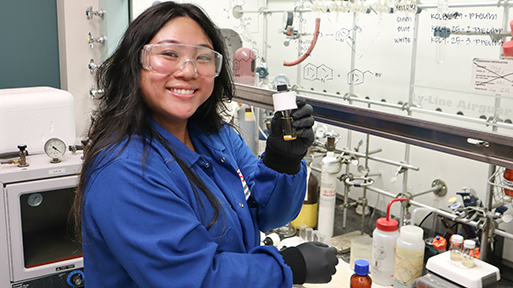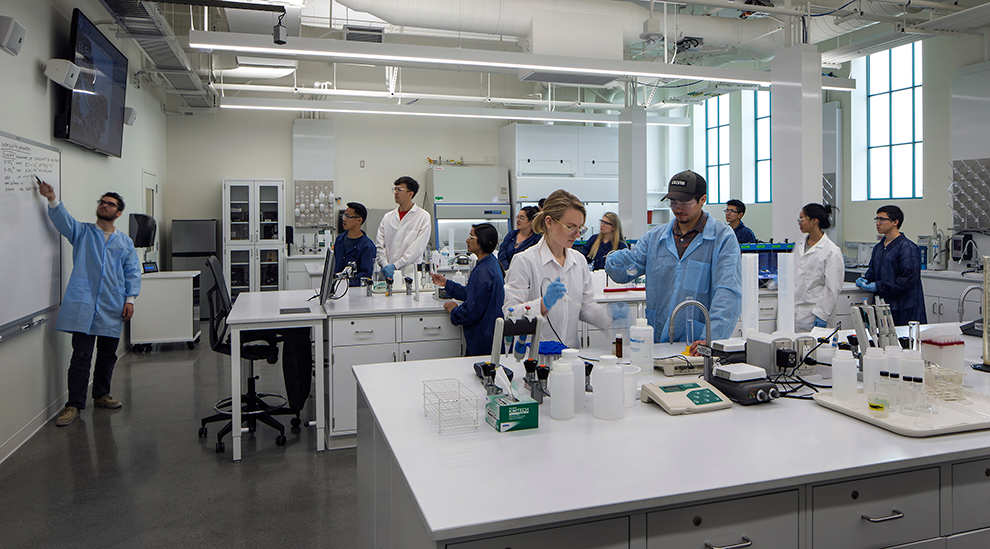Drive for Faster, Cheaper Wireless Charging Sparks SDSU Engineer's Lifelong Research
Imagine a world in which you can charge your car wirelessly in minutes. Thats the future engineer Chris Mi envisions, and one he will illuminate in the Albert W. Johnson Research lecture

Growing up in a rural area of the eastern Chinese province Anhui, Chunting “Chris” Mi used oil lamps to read at night because there was no electricity in his small village. Once he went to college and began his path as an engineer, he and his father fantasized about building a windmill to bring power to their neighbors.
The town eventually got electricity without Mi’s intervention, but by then an idea was firmly planted in his mind: to bring electricity, and electrical innovations, to everyone – no matter their circumstance.
Now Mi is the chair of San Diego State University’s electrical and computer engineering department, leader of SDSU’s GATE Center for Electric Drive Transportation, and an accomplished researcher whose work has made charging electric vehicles far-and-wide cheaper, faster, safer and more efficient. Mi’s research encompasses wireless charging, battery management systems, and sustainable energy grids. He is also helping a team of San Diego-based researchers build flying taxis in a $5.8 million project funded by NASA, designing a lightweight propulsion system that allows the air-taxis to take off and land vertically.
Mi is the recipient of the 2022 Albert W. Johnson Research Lectureship, SDSU’s highest research honor. His lecture, “Wireless Power Transfer – from Science Fiction to Reality,” is scheduled for 3-6 p.m on March 10 at the Tula Community Center.
“Chris is a phenomenal researcher and colleague,” said Hala Madanat, interim vice president for research and innovation. “He truly wants to improve the world for everyone, and his research is essential to making wireless charging more ubiquitous and renewable energy more sustainable.”
As a prolific researcher, dedicated teacher and mentor to the next generation of engineers, Madanat said, Mi “exemplifies what sets SDSU apart.”
Environmental Focus
For Mi, his work on wireless energy transfer is an opportunity to address major climate and extreme weather events, like the tornadoes that devastated Kentucky in the fall or the rising sea levels that threaten coastal communities. “This is all linked to climate change. It’s apparent that we need to do something for the environment,” said Mi.
Reducing carbon emissions through electric vehicles and smart energy grids is critical to curbing global climate change, Mi noted, adding that many recent regulatory and legislative efforts aim to incentivize renewable energy. One aspect of Mi’s research involves improving wireless charging for electric vehicle batteries so that the charging equipment is more compact and works quickly, allowing for ease of use that could help electric vehicles become more ubiquitous. Mi and his students developed a circuit topology – the design that transmits electric energy wirelessly – that is recommended by the Society of Automotive Engineers (SAE) as the international standard for wireless electric vehicle chargers.
His work is not limited to charging systems. He also improves battery management systems, designing them so they are safer for drivers and more accurate when predicting mileage available on a car battery.
Mi is also part of several collaborations, including a project with fellow engineering professor Kevin Wood. The pair is building a framework that leverages used electric vehicle batteries – batteries with 20% or more energy permanently lost due to aging – to power major energy grids, helping business owners save on electric bills through measures like shifting electric usage to off-peak hours. Recycling electric batteries is a costly endeavor, and the researchers’ scheme would extend the lifespan of electric vehicle batteries, giving them a second life and allowing for significant savings.
And Mi’s work is not limited to vehicles that traverse roads. He is a key part of the effort to build flying taxis, helping a team of University of California San Diego researchers create open-source computational design tools that will aid the industry in developing the technology. Mi is designing a propulsion system that safely supports vertical takeoff and landing, which would shorten commutes and revolutionize cargo delivery and emergency medicine.
“Chris is one of the hardest working people I have had the pleasure of working with. He is extremely well respected in his field of wireless power transfer and battery management systems,” said Wood. “Chris has the unique ability to be a fantastic project manager and a brilliant scientific mind.”
Love for teaching
Today, the mechanisms Mi works with are almost always small: components that fit inside a charger or battery system. But that hasn’t always been the case. When Mi first began his career in North America, as an engineer for General Electric Canada, he worked on motor systems that were over a story tall. The massive motors were used to send fresh, potable water from mainland China to Hong Kong.
Though he enjoyed the work, he missed teaching – a task he thrived at earlier in his career when he spent eight years as a lecturer in China. Mi’s own mentor during his graduate studies left a big mark on his life, encouraging his research and teaching interests. Mi wanted to do the same for others, helping them grow not only as scientists but also as budding professionals. At SDSU, Mi supervises senior design projects and is known to help students with resumes, interview tips and career advice.
Mi stayed at General Electric for only a year, afterward becoming a professor at the University of Michigan, Dearborn, where he worked for 14 years before coming to SDSU in 2015.
“I wanted to see if I liked industry,” Mi recalls. “It was a really interesting experience, but I realized I still wanted to be a teacher. It is very rewarding working with students.”



